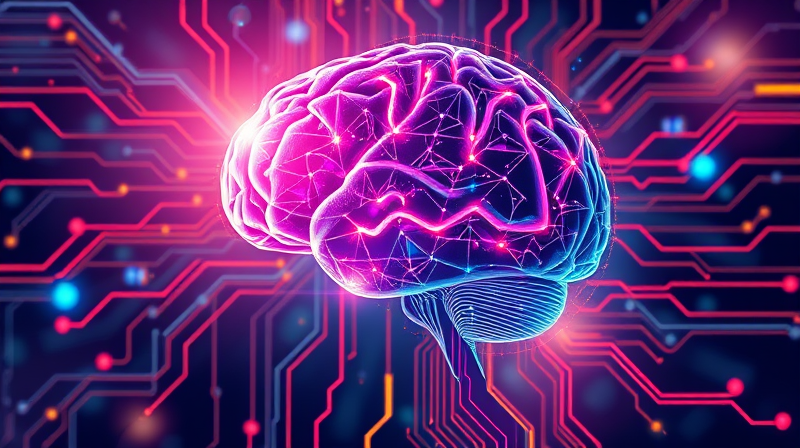Artificial Intelligence (AI) is transforming our modern world in ways that impact every aspect of our lives. This overview is designed for beginners who are curious about AI and want to understand its basic principles, applications, and the journey to mastering it. AI might seem intricate at first, but when its components are broken down, it becomes a fascinating subject full of potential and opportunity.
At its core, AI is about creating systems that perform tasks demanding human-like intelligence. Whether it's learning from data, solving problems, or understanding language, AI operates on advanced algorithms that allow machines to improve autonomously. This process is both exciting and daunting, as it opens doors to innovative solutions while presenting challenges that we must navigate carefully.
Understanding the Core Concepts of AI
In order to fully embrace what AI has to offer, it is crucial to familiarize yourself with its foundation. The field of artificial intelligence is vast, holding a blend of complex theories and practical applications. For beginners, gaining a foothold in these concepts is a rewarding venture. Start by understanding the difference between Narrow AI and Artificial General Intelligence (AGI):
- Narrow AI (Weak AI): AI systems designed for specific tasks, such as image and speech recognition, that do not extend beyond the defined scope.
- Artificial General Intelligence (AGI): A theoretical form of AI that would possess the ability to perform any intellectual task that a human can, still remaining an aspiration for the future.
This classification is essential for understanding not only what AI is today, but also its potential evolutions in the coming years.
One must also consider the various subfields of AI, such as Machine Learning, Deep Learning, and Natural Language Processing (NLP). Machine Learning is where AI learns from data, identifies patterns, and makes decisions with minimal human intervention. Within this domain, supervised learning, unsupervised learning, and reinforcement learning provide different frameworks for understanding and deploying AI based on the data available and the task at hand.
Deep Learning, a branch of machine learning, employs neural networks to work through layers of data processing. This approach has made it possible for AI to tackle problems like image and speech recognition with greater accuracy. Meanwhile, NLP empowers machines to grasp the subtleties of human language, making interactions with virtual assistants and chatbots more engaging and natural.
How AI Works in Practice
The practical workings of AI involve a sequence of steps that begins with data collection. This is the cornerstone of any AI system, as robust data is essential for training efficient models. Data is collected in various forms – text, images, numerical readings – and then preprocessed to remove noise and inconsistencies.
Once the data is prepared, it is fed into an algorithm selected specifically for the task, whether it is language translation, image classification, or any other operation. This is followed by model training where the machine learns to identify and predict outcomes based on the patterns it recognizes. Testing and validation help ensure that the model performs accurately and adjusts to unexpected inputs.
The final stages involve deploying the model in real-world scenarios and allowing it to continually learn from new data. This continuous learning cycle is what keeps AI systems relevant and improves their performance over time.
Real-World Applications and Getting Started
The influence of AI is evident in everyday life. Virtual assistants like Siri and Alexa use NLP to interpret voice commands, while recommendation systems on platforms like Netflix leverage AI to personalize user experiences. Furthermore, AI has revolutionized industries such as healthcare and automotive technology, where it assists in making diagnostic decisions and powering self-driving cars respectively.
For beginners eager to embark on their AI journey, there are several foundational skills to master. Learning essential mathematics, particularly linear algebra, calculus, and probability, is important. Additionally, becoming proficient in programming languages like Python is crucial since it offers libraries such as TensorFlow and PyTorch for developing AI models.
Start with online courses on platforms like Coursera or DataCamp and engage in small projects available on GitHub or Kaggle. Experimentation and consistent practice are key, as these steps will reinforce theoretical knowledge with practical experience. Learning AI is an iterative process that improves with time and persistence.
Moreover, staying updated with the latest research and following AI experts can provide insights into emerging trends and best practices. By dedicating time and effort towards understanding AI, you are not only learning a technology, but you are also preparing yourself to be part of a transformative movement.
Despite its promising benefits, AI also presents challenges and ethical considerations. It is critical to be aware of biases that may permeate AI systems due to unbalanced datasets, and to understand the economic impact of automation on jobs. Addressing these challenges requires a conscientious approach to ensure that AI is used in a fair, safe, and responsible manner.
In summary, AI is a dynamic and ever-evolving field that intersects with various aspects of modern life. By engaging with its fundamental concepts, understanding its operational mechanics, and developing the skills needed to work with AI, beginners can unlock a world of opportunity. Your journey into AI is not just about acquiring knowledge, but about becoming a part of an ongoing evolution that defines the future of technology.
Embrace the challenge and let your curiosity drive you towards a deeper understanding of artificial intelligence, one step at a time.








